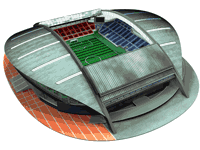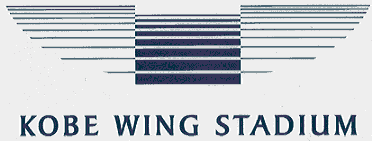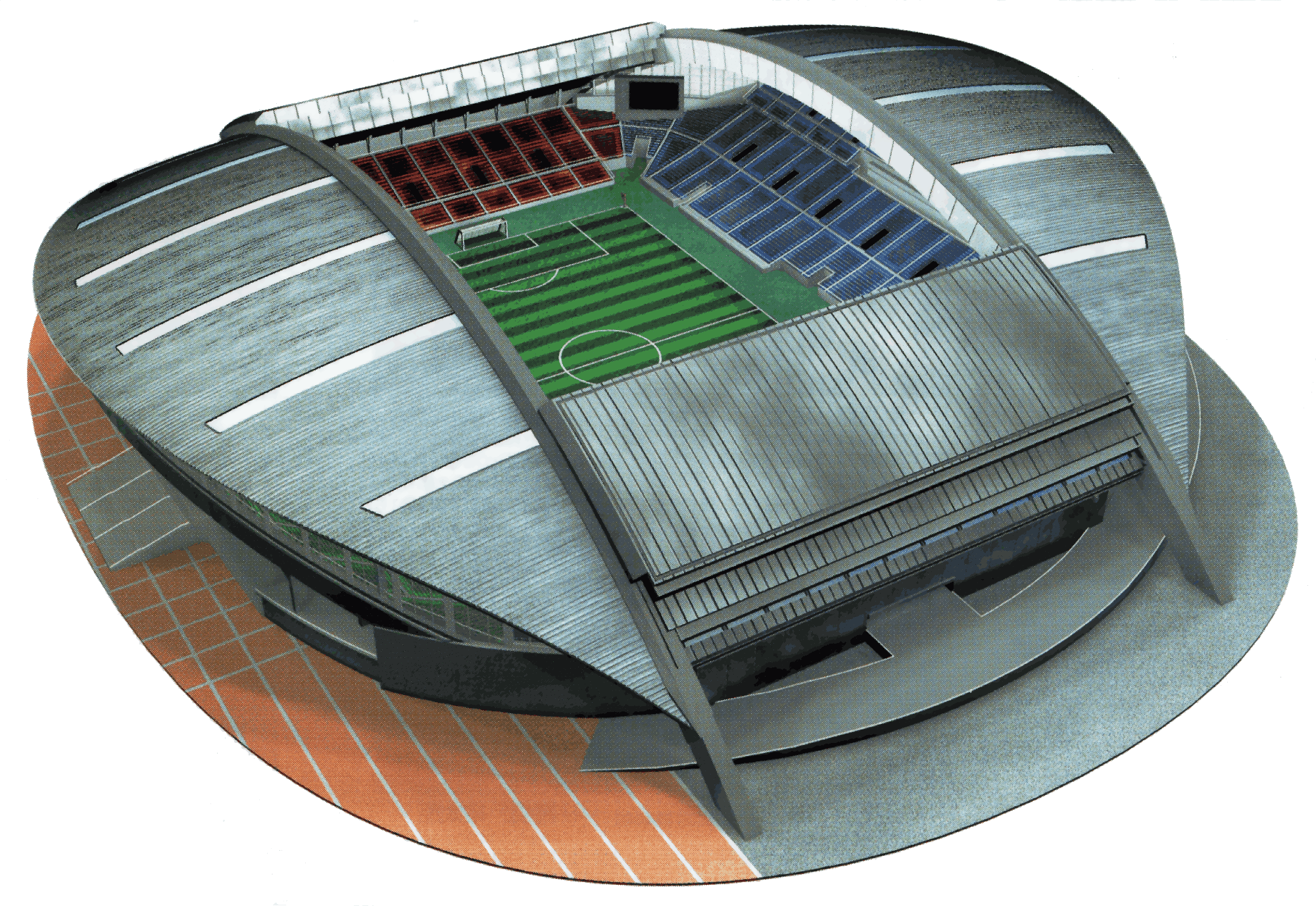Kobe Wing Stadium
(aka "Noevir Stadium")
Kobe City, Hyogo Prefecture
Kobe is Japan's second largest port, following Yokohama, and has long been an international city and entrepot to the world. Located at one end of the Seto inland sea, this beautiful seaside town was devastated by an earthquake in the mid 1990s, but has risen from the ashes to become a sparkling metropolis and a centre of sports in Japan. Kobe not only boasts a J.League first division football team; it is also home to Kobe Steel - perrennial contenders for the Japan Rugby League title, and a share in Orix Buffaloes, a team that came out of a merger of Kintetsu Buffaloes (Osaka) and Kobe's Orix Blue Wave (which produced baseball star Ichiro Suzuki).
One of the most interesting pastimes for those Japanese football fans who are fluent in English is to trade stories about the most ridiculous and outlandish "myths" appearing on the Internet regarding Japan, and its World Cup preparations. It often seems that overseas journalists who are pressed for a story figure that if they can't find any interesting facts to write, it is just as easy to make up information as they go along. Though an avid Internet surfer can quickly locate bogus information about nearly any of the World Cup venues, Kobe Wing Stadium seems to attract more than its share of "fabricated facts". For example, several web sites (including one operated by a well-known newspaper in the UK) have claimed that Kobe Wing Stadium is a refurbished stadium formerly known as "Universiade Stadium", which was expanded in order to become a venue for the World Cup (in reality, Kobe Universiade Stadium is some distance away, has never been refurbished, and already has a seating capacity that is about 12,000 more than the capacity of Wing Stadium).
|
Another official WC2002 web site in the United States claimed that Kobe officials didnt want to build Wing Stadium, but were forced to by government officials because they needed another venue in order to please FIFA (in reality, there are at least four or five recently-completed, football-only facilities in the country that spent years begging to host the World Cup, and only missed out because FIFA awarded half of the matches to Korea) But for all the "creative fiction" that has been printed about the venue, those who see Kobe Wing Stadium in real life will not be disappointed. This football-only stadium is designed without a bad seat in the house. The high banked stands behind the goals offer one of the finest supporter views of any World Cup venue, and the architecture is reminiscent of the 2000 Olympic Stadium in Sydney. |
 |
Interestingly enough, Kobe Wing Stadium was not "completed" until after the World Cup. Although the stadium may have looked complete when fans attended the matches in 2002, there was one feature that could not be put in place in time. The stadium has a roof that allows the stadium to close up almost completely during inclement weather. In order to increase capacity for the World Cup, the end zone stands were temporarily extended at each end of the stadium. Afterwards, they were torn down in order to put on the movable roof.
 |
||
| Kobe Wing Stadium |
Capacity: 42,600 | |
| Home Team: Vissel Kobe | Completed: September 2001 | |
| Location: Kobe City, Hyogo Prefecture | ||
Stadium Access |
 Click to enlarge |
 |
Ticket PricesGeneral admission: |


